How to Use Yoni Eggs for Fertility Support
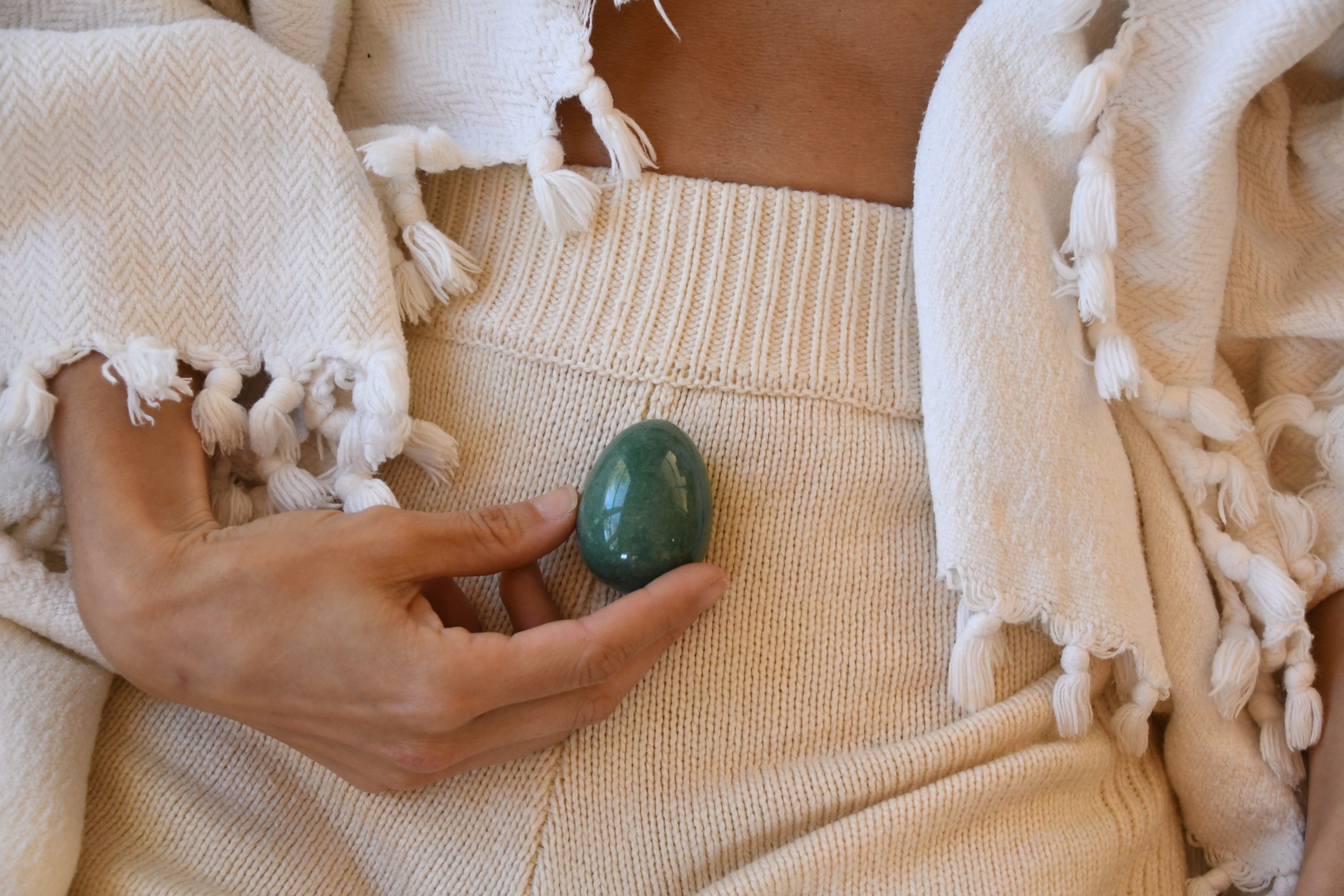
Table of Contents
Legend has it that yoni eggs were first used thousands of years ago in ancient China, where Jade eggs were kept as closely guarded secrets of the royal courts. Empresses and concubines of the emperor are said to have used these egg-shaped stones to strengthen their vaginal muscles and enhance fertility.
In Taoist traditions, the yoni was seen as a source of vital life force, and practices with Jade eggs were believed to keep this energy flowing, allowing women to remain fertile and sexually alive well into later life.
But while the legend speaks of “fertility” and “youth,” what is often missing is any clear explanation of why placing an egg inside the vagina might actually support these outcomes. Most women are told the practice “works,” but the real inner changes are rarely explained.
In today’s article, you’ll learn how yoni eggs can prepare your internal landscape for fertility and how to use them properly so you can unlock their full potential.
How Yoni Eggs Support Fertility From the Inside
The vagina is alive. Inside are layers of muscles, soft tissue, blood vessels, and nerves that respond to everything you go through. These inner tissues are meant to expand and contract. They carry blood and sensation and shift with each cycle. When they are strong yet supple, the womb has the nourishment and circulation it needs for fertility. When they’re weak or tense, the body struggles to fully prepare for conception.
When you place a yoni egg inside, its smooth, rounded weight presses gently against the walls of your vagina. Your pelvic floor muscles naturally draw in, release, and adjust around it. With every tiny movement, blood flow increases, tissues hydrate, nerves fire, and your brain begins to register this part of your body in a new way.
Over time, the muscles that were “asleep” start to activate, and areas that were gripping too tightly learn to let go.
This is different from going to the gym or doing squats. External exercise strengthens the big muscles of your hips and glutes, but it doesn’t reach the small, delicate muscles that hold your uterus and bladder in place.
How the Pelvic Floor Muscles Affect Reproduction
At the base of your body lies the pelvic floor, an inner hammock of muscle and tissue that holds everything in place, including the uterus, the ovaries, the bladder, even the bowel. It breathes with you. It responds to your hormones. Its inner musculature and nerves shifts with stress, with desire, with fatigue. This foundation is what makes fertility possible, even though most women never get taught to feel it.
When the pelvic floor is healthy, it behaves like a pump. With every subtle squeeze and release, blood is pushed deeper into the womb and ovaries, carrying oxygen and hormones. Lymph is cleared out, tension drains away, and the tissues of the uterus stay soft, nourished, and ready to receive. A strong but supple pelvic floor feeds fertility by keeping the inner landscape vibrant.
But when the system tips out of balance, the ripple is felt everywhere. If the hammock is too loose, organs can shift downward. A uterus that isn’t well-supported may not get the circulation it needs, making implantation more difficult.
If the pelvic floor is too tight, the effect is just as disruptive. Muscles that are constantly clenched choke off the very blood flow they’re meant to encourage. The womb is being held too firmly, and life can’t take root in tissues that are starved of nourishment.
Many women don’t even know how to feel their pelvic floor, let alone engage it. Years of being in fight or flight dulls awareness until this vital system goes silent. Without feedback between the vaginal wall and the brain, the muscles stop coordinating with the rest of the body.
How Yoni Eggs Provide Incredible Benefits for Fertility

1. Strengthens The Pelvic Floor Muscles
The vaginal canal is wrapped in several layers of pelvic floor muscles, the pubococcygeus, puborectalis, and bulbospongiosus that support the uterus like a bowl. In modern life, these muscles often lose balance, which disrupts circulation and reduce the uterus’s ability to stay in its optimal position.
A yoni egg's weight presses into the vaginal wall from all sides, so the body can’t ignore it, and works in a similar way as doing kegel exercises. The muscles naturally contract and release around the egg, creating a 360-degree re-education. Proper tone keeps the uterus lifted rather than sagging forward or back, which improves blood supply to the endometrium. It also helps prevent venous congestion in the ovaries. A uterus that is mobile and well-supported has better access to the nutrients and oxygen needed for implantation and early pregnancy.
2. Improving Blood Flow and Hydration
When the pelvic floor contracts and releases with an egg inside, it acts like a pump. Each movement pulls fresh arterial blood into the uterus and ovaries and flushes out stagnant venous blood and lymph. This cycle of inflow and outflow is vital. Without it, the pelvic area can become congested, leaving tissues undernourished.
More circulation means a thicker, healthier uterine lining, which is essential for implantation. Ovaries that receive better oxygenation and nutrient delivery are more likely to produce high-quality eggs. Increased blood flow also supports natural hydration of the vaginal wall and cervix. Fertile-quality cervical fluid depends on tissue hydration and circulation, it’s one of the strongest indicators of fertility, and egg practice directly helps improve it.
3. Awakening the Nervous System
The vaginal wall is filled with sensory nerves, but for many women these pathways are underused or dulled. A yoni egg stimulates them continuously, creating proprioceptive feedback where the brain becomes more aware of how the pelvic floor is working. Over time, this strengthens the loop of communication between the brain and the reproductive organs.
The hypothalamic-pituitary-ovarian (HPO) axis, which regulates ovulation and menstrual cycles, depends on smooth communication between the nervous and endocrine systems. When the nervous system is more attuned to the pelvic floor, the body regulates hormonal signals more consistently.
4. Releasing Tension and Emotional Holding
The pelvic floor is also a container. For many women, it is where the unsaid lives. The womb and cervix, especially, hold onto unprocessed emotions in a very physical way.
This is why womb work so often includes yoni eggs. A womb that is gripped by old tension cannot move with the breath or receive full blood flow. A cervix that is locked tight cannot soften enough to let life in. And a body caught in the loop of unprocessed stress often stays in survival mode, where conception is harder to achieve.
5. Restoring the Quality of Receptivity
Receptivity is one of the most overlooked aspects of fertility. We often talk about ovulation, lining thickness, or egg quality, but at the heart of conception is something simpler, can the body receive? The womb has to be both a container and an opening. Too rigid, and nothing enters. Too loose, and nothing stays.
Over time, with the egg as a steady presence, the vaginal canal learns a fuller range of response, strong engagement, yes, but also the softness of surrender. The tissues become more hydrated, more willing. The cervix learns how to open and close with rhythm. The womb shifts into a state of mobility and readiness.
Implantation requires and womb than can invite and embriyo in and hold it, and yoni eggs aid the conditions needed for this.
When and How to Begin: Creating a Safe and Consistent Routine
1. Begin in the Follicular Phase
The best time to introduce a yoni egg is just after menstruation has ended, when the body is entering the follicular phase of the cycle. This is the time when estrogen begins to rise and the uterine lining is rebuilding in preparation for ovulation. Vaginal tissues are more elastic and hydrated during this phase, making them more receptive to subtle internal practices.
Beginning here also gives you the clearest baseline for observing change, because you’re starting with a “clean slate” after bleeding, it’s easier to track how the practice influences lubrication, cervical mucus quality, and even the timing of ovulation across several months. Over time, you may notice that fertile discharge becomes more abundant or that libido aligns more closely with your fertile window, both signs that circulation and hormonal rhythm are being positively affected.
2. Introduce the Practice Slowly
Many women discover, once they place the egg inside, that the tissues are weaker, tighter, or more disconnected than they imagined. This is why a slow entry point matters. Start with 5–10 minutes every two or three days. In that short span, the egg stimulates circulation and proprioception without overwhelming the tissues.
Afterward, notice how your body responds. Increased vaginal moisture or a gentle rise in desire are all positive indicators. On the other hand, cramping, dryness, or emotional heaviness suggest the pelvic floor is at its limit. In these cases, rest is the most intelligent next step.
3. Track Your Body’s Fertility Signals
One of the most powerful ways to see how the practice is working is to track changes across cycles. This goes beyond noting whether or not you ovulate. Pay attention to the quality of your cervical mucus, does it shift from sparse or sticky to more abundant and slippery around ovulation? Do you notice that arousal and libido feel stronger, more aligned with fertile days? Has your basal body temperature pattern become more stable?
Over two or three cycles, these small details reveal whether your pelvic tissues are becoming better nourished and more hormonally attuned.
4. Honor Rest as Fertile Ground
Perhaps the most overlooked part of any fertility practice is rest. The pelvic floor does not need daily engagement with an egg; in fact, overuse creates conditions that work against conception. Rest days allow tissues to remain hydrated, elastic, and nourished. They also give the nervous system a chance to integrate new patterns of proprioception and release.
Fertility thrives in balance, where activation is followed by softening, and effort is followed by receptivity. Knowing when to stop and when to simply let the body be is just as productive as the practice itself.
Professional Support: When to Partner with a Specialist
Yoni eggs can change the body from the inside out. They bring warmth and blood flow where stagnancy has settled and they help the womb space feel supple and alive again. Over time they do create the kind of inner environment where conception is more likely. But they are not the whole story. Fertility is never just about one factor. Hormones, egg quality, sperm health, uterine lining, thyroid balance, stress load, each plays a role. A yoni egg can prepare the soil, but it cannot guarantee that the seed will take root.
For some women, this practice alone feels like enough. Cycles regulate, fertile fluid becomes more abundant, desire returns, and conception happens naturally. For others, months pass and the body still struggles to carry the process through. This is the moment where seeking professional help might be required. A fertility specialist can test hormone levels, assess egg reserve, or look at uterine structure in ways that internal practice cannot.
Sometimes what looks like “mystery infertility” is actually an undiagnosed thyroid condition, an autoimmune response, or scar tissue from an old surgery. These are not things a yoni egg can resolve, but they are things that can be worked with once identified. If you are walking a path that includes IVF, IUI, or other medical interventions, yoni eggs can also be part of your fertility journey.
What This Practice Opens Up
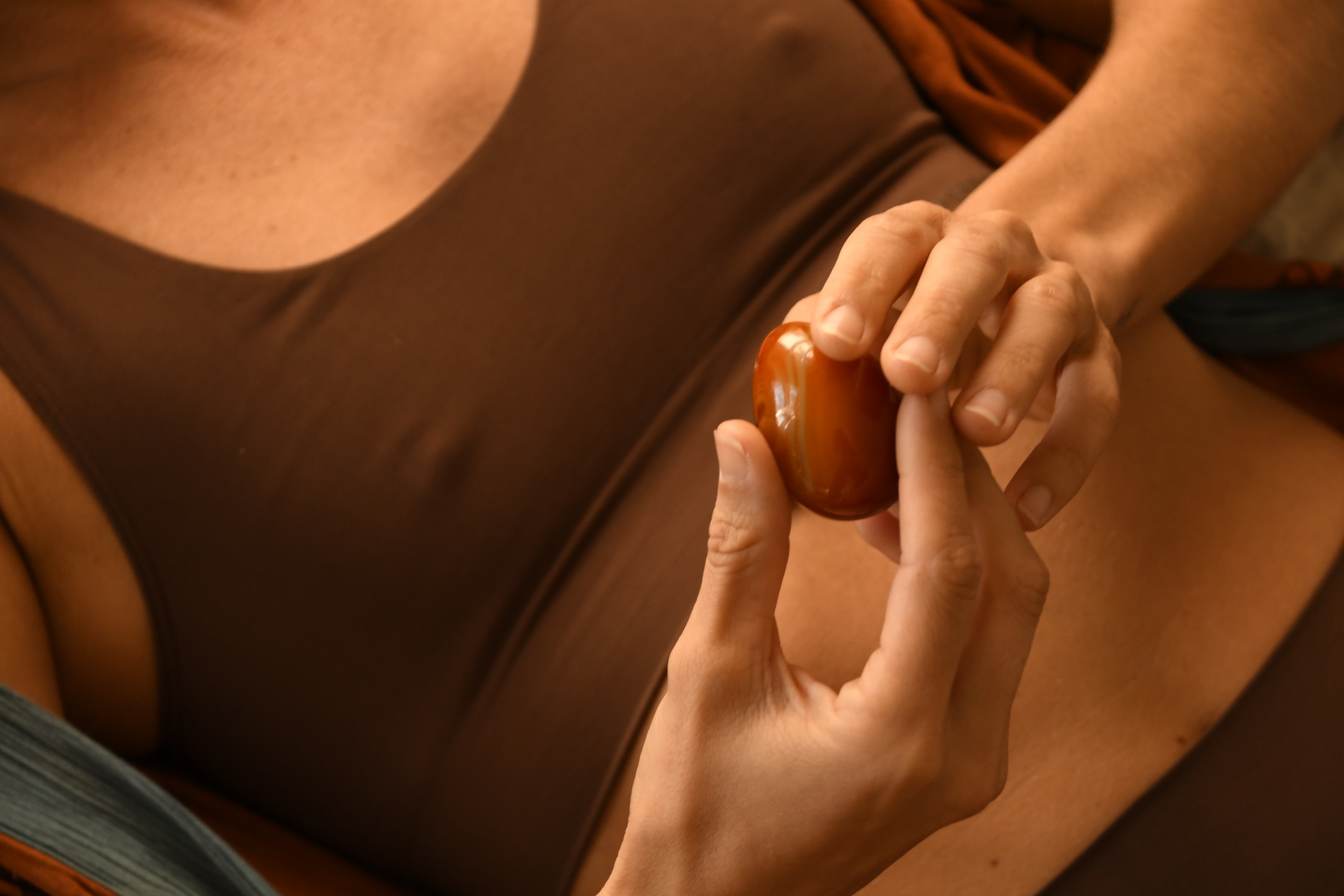
Over time, a yoni egg practice opens awareness. The presence of the egg draws your attention into places that are usually silent and invites consciousness. You begin to feel your pelvic space as alive and full of information.
Many women struggle with fertility because of disconnection. We spend years away from ourselves, overriding the body’s signals and ignoring what the womb is trying to say. With a yoni egg inside, you can’t tune out the messages anymore. Your yoni begins to speak. And slowly, you learn to listen.
You start to notice things you might have overlooked: changes in your discharge, shifts in your libido, the way your pelvis holds stress, or how depletion shows up in your cycle. They are signs pointing to what needs nurturing. And when you respond, your body begins to return to balance.
The practice restores fertility by bringing you back into presence with yourself. A womb that is seen and cared for becomes healthier. And a woman who feels at home in her body naturally creates the conditions for conception, because fertility requires alignment, vitality, and the ability to receive.
Frequently Asked Questions
Yoni eggs are egg-shaped stones, traditionally Jade eggs, that are placed inside the vagina. Unlike external exercises, having a yoni egg inside gives your body direct feedback. The vaginal wall and pelvic floor muscles immediately respond to the weight, contracting, releasing, and slowly becoming stronger and more coordinated. Over time, this practice helps strengthen your pelvic floor, increase sensitivity, and improve sexual health in ways most women were never taught growing up.
Physically, regular yoni egg exercises tone the internal muscles that support the uterus, bladder, and bowel. A responsive pelvic floor reduces health issues like leakage, prolapse, or pain, while improving circulation in the pelvic area. Better blood flow means better lubrication, more cervical fluid, and increased arousal, all signs of improving reproductive health. Many women also notice stronger orgasms and deeper sexual pleasure because the vaginal muscles are more alive and responsive.
In the beginning, keep the egg inside for 5–10 minutes while doing light pelvic floor exercises such as gentle squeezes or simple movements. This allows your vaginal muscles to adapt without strain. Over time, you can build up gradually, but leaving the egg in for an extended period or long periods, like several hours, is not recommended, especially for beginners. Too much use can create irritation, pain, or overly tight pelvic muscles instead of pelvic floor strength.
The safest and most effective approach is a regular practice of two to three times per week. Think of it like pelvic floor training or strength work: consistency matters more than duration. Always pay attention to your body. If you feel discomfort, cramping, or emotional overwhelm, remove the egg right away. The narrow end of the egg should face down to make removal easier. Afterward, wash your egg with warm water and mild soap to avoid risk of infection, and store it in a breathable pouch.
The word yoni is a Sanskrit word that refers not only to the vagina but to the sacred feminine energy itself. In Taoist and ancient China traditions, women used jade eggs as part of womb and vitality training. Today, many women use egg shaped stones like jade, rose quartz, or obsidian as part of crystal healing or energy work.
Spiritually, keeping a yoni egg inside can help release emotional blockages that have built up over years, grief, tension, or old experiences stored in the womb. Yoni egg practices often deepen self discovery and many women report feeling more connected to their feminine energy, more sensitive to pleasure, and more present in their bodies.





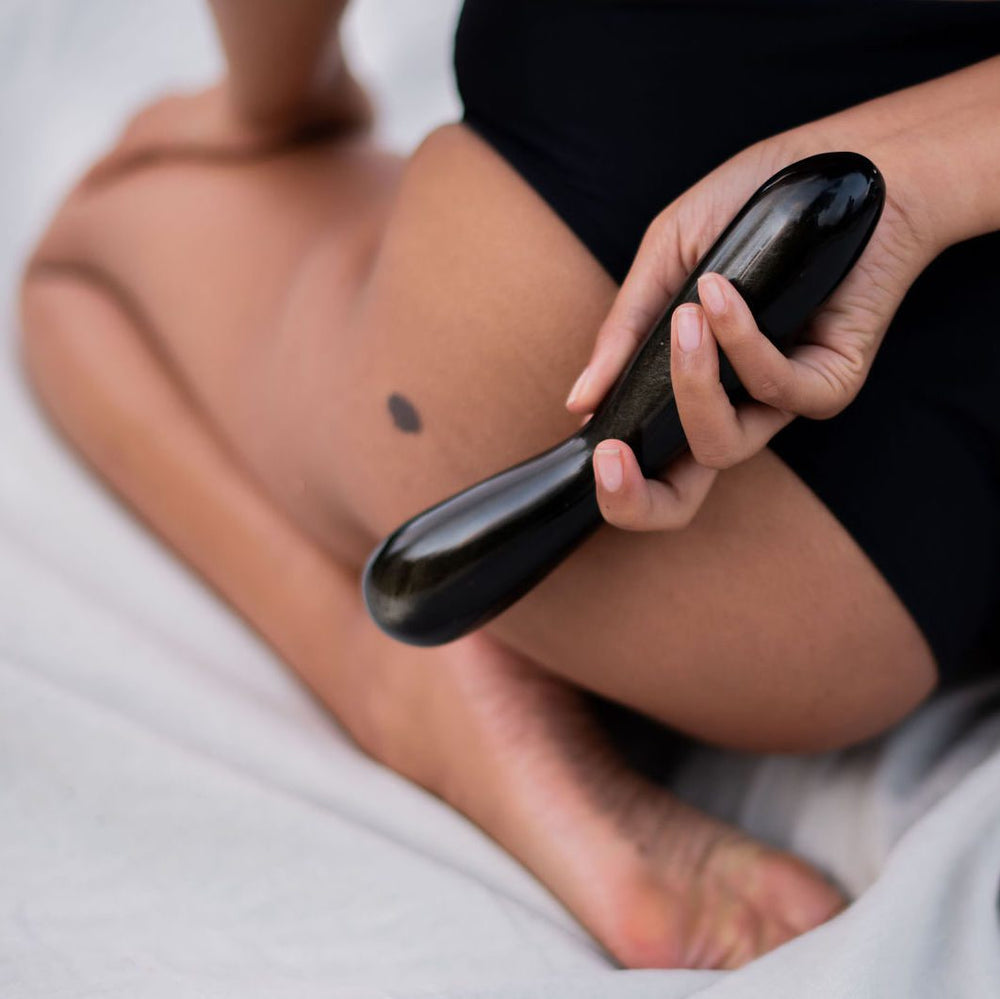


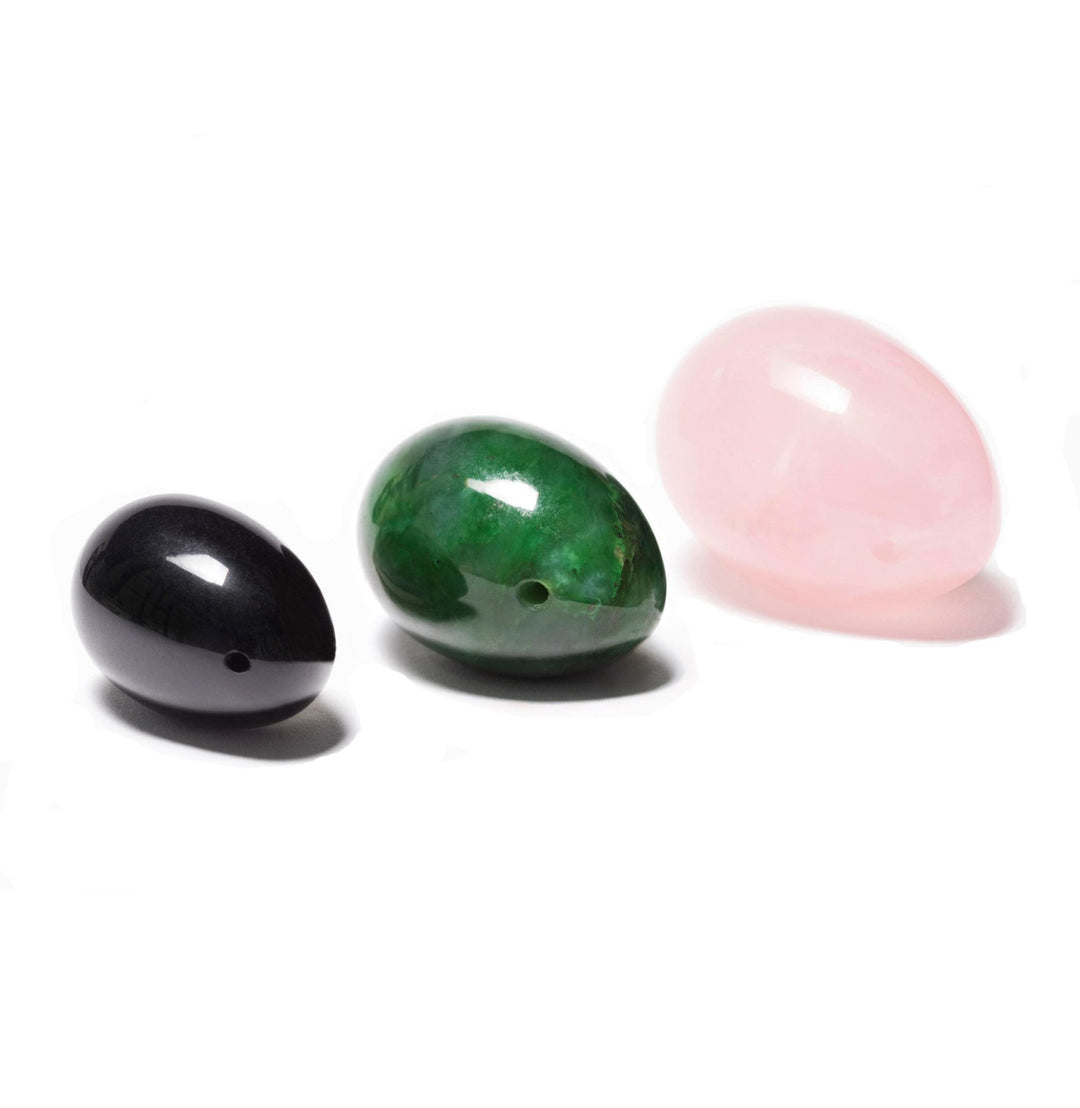

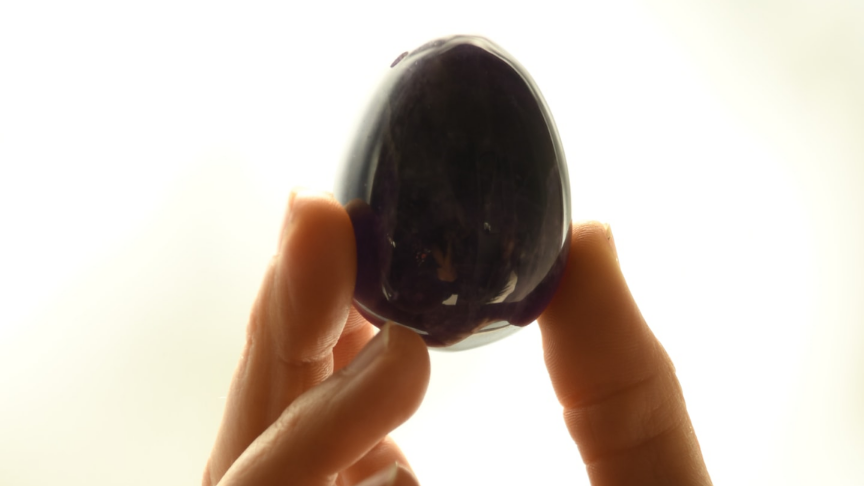


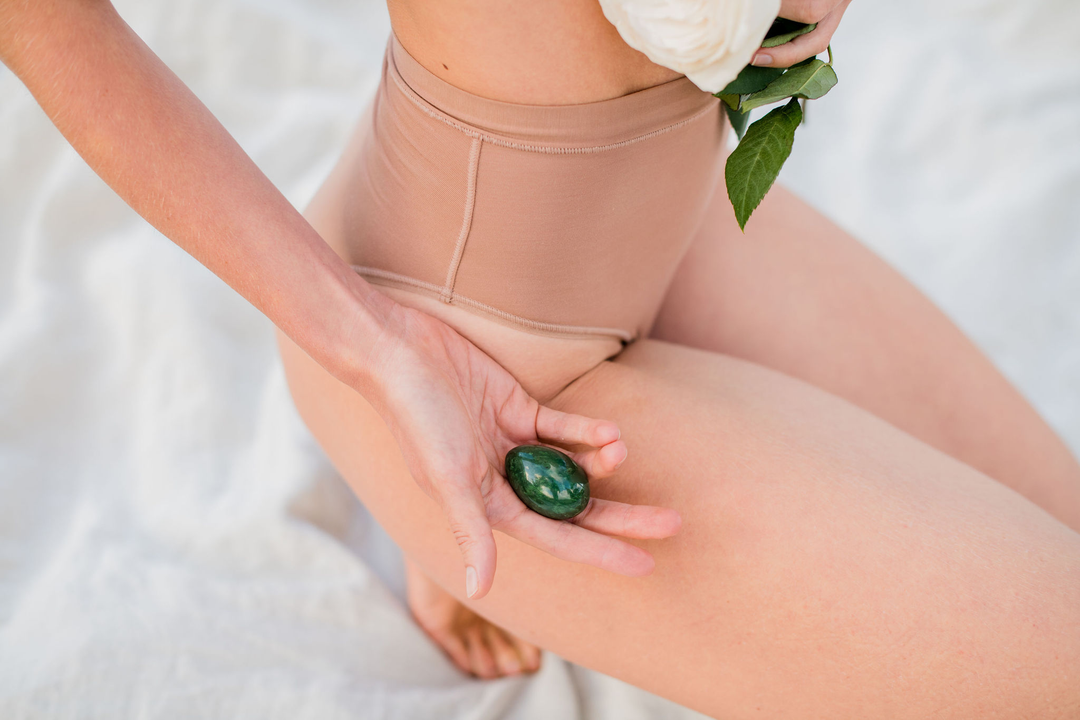


Leave a comment